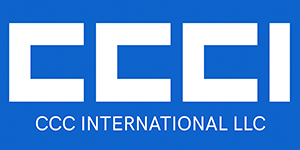Digital Comic Revolution: K-webtoon Jumpstarts Manhwa Global Growth
Webtoon, a new tool for the cultural proliferation of South Korea
Korea’s digital economy sketched the meteoric rise of the webtoon industry along with Korean films and drama. Webtoons are comics published on the online web and mobile platforms, and they form a new social phenomenon in the digital era: “webtooniverse”.
The global k-webtoon community is quickly expanding, making webtoon a “syndrome” in the current generation. For years, webtoon has been enhanced with vibrant colors, visual effects, as well as music and sound effects, and it has been adapted into many worldwide hit Korean dramas. If you’re familiar with K-dramas (Korean dramas), you have to know that webtoons are the inspiration behind many of these. Gripping plots, interesting characters, and exquisite art make millions of fans obsessed with these revolutionary comics.
According to the statistics of Korea Creative Contents Agency, the overall value of the local webtoon market jumped from 52.9 billion won in 2010 to over 880 billion won in 2018, 900 billion won in 2019 and, as expected, the value exceeded 1 trillion won in 2020. The change drivers, promoting the market growth, were flourishing small and medium-sized webcomic publishers mainly targeting adults.
The market size of webtoons itself is about nine trillion won. While in consideration of the fact that all K-dramas and movies are adaptations based on highly popular webtoon series, the total market size reaches a hundred trillion won.
The development of revolutionary Korean comics has given a boost to online and mobile reading platforms.
K-webtoon market platform giants
The dominant roles of Naver and Daum
Though Google is the number one search engine platform worldwide, there are only three countries – Russia, Korea, China – where the default search engines are different.
There are two biggest portals in South Korea – Daum and Naver. They launched their own webtoon platforms and have been leading the market for a long period.
Naver, the most-used search portal in Korea, ranks the fifth-largest in the world. For its millions of users, Naver offers high-rated user-generated content in the form of email, blog, Q&A, shop, TV, and newspapers.
Furthermore, Naver is the leading, most convenient, and optimized portal for reading webtoon. Naver Webtoon is a webtoon publishing portal launched in 2004. After ten years, it launched LINE Webtoon, later renamed WEBTOON, for global webtoon readers.
When it comes to global expansion, Naver faces growing competition from its crosstown rival Daum merged with Kakao, South Korea’s second-largest portal.
“Our goal is to establish our webtoon platform around the world, in every country in every language. We are at about ten percent of that goal,” Kakao Entertainment Chief Executive Lee Jinsoo said.
Kakao plans to dominate over Naver Webtoon. Meanwhile, Naver concentrates on strengthening its platform competitiveness worldwide. This is a continuous fight for dominance in the K-webtoon market not only in South Korea but also in Japan, the world’s largest comics market, the US, France, and other foreign countries.
Both of these are among the largest companies and the internet giants in the country. They also endeavor to get international storytelling platforms to expand their user base.
The digital comics platform operators up investment to tap into overseas markets. Hence, they have their webtoons translated into many languages: French, Japanese, Spanish, Indonesian, Dutch, and more.
Webtoon outside South Korea
Korean web novels and webcomics have a global readership, and day by day that number increases drastically. Digital manhwa has emerged as a popular medium not only in homeland Korea but also in Europe, America, Japan, China, and other Asian countries.
Webtoon in the US
With the popularity of manga in the US since the 60s and 70s, k-webtoon also found its way to spread on the opposite side of the world. Many webtoon publishers have been greatly successful in the United States and other English-speaking countries. Next to many American hero cartoons such as Marvel Comics and DC Comics, Korean webtoon has gained popularity among the American readership. The most interesting part is that this year in the US webtoon market, the number of monthly users of LINE Webtoon surpassed eleven million, with sixty-five percent increased sales in comparison with last year. Hence the US webtoon sales reach more than ten billion Korean Won. Ultimately, Korean webtoon translation to English has gained popularity in both the U.S. and Korea.
Webtoon in Japan
Japan is considered to be one of the greatest bastions and birthplaces of comics. Domestic content creators contextualize and localize Japanese manga and comics for the Korean market. As a result, they succeeded in keeping comic culture alive in terms of readership and artistic practices. In turn, Korean youth has maintained its interest in comics and manga culture.
According to statistics, as of 2020, digital comics’ top global markets are Japan (with nearly 4.5 trillion won), the US (with 1.79 trillion won) and Korea (with 1.55 trillion won).
Webtoon in Europe
K-webtoon is not just beloved in Japan or the US; it is enjoying continuous growth in European countries such as France, Spain, Germany, etc. Like manga in France, webtoons in France have grown in popularity, too.
Undoubtedly, Naver Webtoon is creating a webtoon ecosystem throughout the world. Subsequently, it aims to introduce services in as many countries as possible. Currently, Korean manhwa, webcomics, novels, completed webtoons are available in nearly a hundred countries in ten languages including English, Japanese, Chinese, Spanish, French and Indonesian.
Yet, “Kakao Webtoon”, a webtoon pioneering platform introduced by Kakao Entertainment, will be released first in Thailand and Taiwan, and continue to expand the service in English, Spanish, French, and German.
With the expansion and recognition of K-webtoon in Europe, many webtoon publishers look for a way to get them into the hands of mainstream readers with the help of accurate translation and localization services. Accordingly, webtoon translation into Spanish, French, and German are the most in-demand ones.
Webtoon in Indonesia
K-Webtoons are making high profits in Indonesia too. Both Indonesia and Thailand have become big markets for the comics industry; you can easily find original webtoons and fully translated titles into Thai and Indonesian. There is also an active webtoon community, making Indonesia one of the top countries to target in terms of comics localization.
Webtoon also has seen an increase in production and popularity in many other countries like India, China, Germany, etc.
It’s said that Webtoon is meant to play the role of Disney in Asia. The current and even older generation in the aforementioned countries grew up reading Japanese manga and Korean manhwa, American superhero comics, as well as French bande dessinée and Chinese manhua. With the launch of vertical-scrolling comics online, readership started to shift towards these digital revolutionary comics. What’s more important is that k-webtoon is well-crafted and created after careful study of the current society and contemporary human behavior.
Comics, manga, anime, manhwa, manhua, and bande dessinée have all seen growth in popularity over the past few decades owing to rapid globalization and the dawn of the internet. As resources have become more available and people across the globe more interconnected, localization and self-publishing have also become more common.
Multilingual webtoon translation and typesetting
CCC International is the leading manga and k-webtoon translation and typesetting company worldwide. Korean webtoon translation to English is one of our most in-demand services. With teams and members in Japan, Malaysia, the Philippines, Singapore, Armenia, Austria, Germany, France, Belgium, and the Middle East, CCCI covers a wide range of languages for our manga, webtoon, and comics translation and typesetting or lettering. Send us your raw manga, comics, and webtoon files, web novels and we can readily typeset various languages into it.
We have available teams for the following languages:
- English to French manga, manhwa, bande dessinée, manhua, webtoon translation and typesetting
- English to German manga, manhwa, bande dessinée, manhua, webtoon translation and typesetting
- English to Spanish manga, manhwa, bande dessinée, manhua, webtoon translation and typesetting
- English to Italian manga, manhwa, bande dessinée, manhua, webtoon translation and typesetting
- English to Arabic manga, manhwa, bande dessinée, manhua, webtoon translation and typesetting
- English to Thai manga, manhwa, bande dessinée, manhua, webtoon translation and typesetting
- English to Indonesian manga, manhwa, bande dessinée, manhua, webtoon translation and typesetting
- English to Russian manga, manhwa, bande dessinée, manhua, webtoon translation and typesetting
- Korean to English manga, manhwa, bande dessinée, manhua, webtoon translation and typesetting
- Korean to German manga, manhwa, bande dessinée, manhua, webtoon translation and typesetting
- Chinese to English manga, manhwa, bande dessinée, manhua, webtoon translation and typesetting
- English to Japanese manga, manhwa, bande dessinée, manhua, webtoon translation and typesetting
Check also – Korean words and phrases from K-dramas, comics and webtoon to read for Christmas, Webtoons to read in spring 2022.






